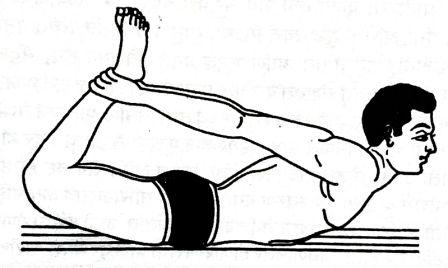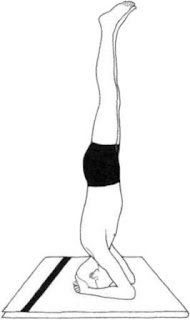That most familiar of asana sequences, Surya Namaskar or Sun Salutation is as rich in symbolic and mythic overtones as it is in physical benefits. It is a sequence of 12 powerful yoga poses. It is best done in early morning at sunrise on an empty stomach.
The whole body gets health, strength and energy through Surya Namaskar. This brings activity in all the organs of the body and regulates the process of hormones) of all the internal glands of the body. If possible, do it at sunrise. You can do Surya Namaskar from 1 to 21 times as often as possible.
12 Steps of Surya Namaskar or Sun Salutation
Step 1-Pranamasana (Prayer Pose): Stand facing the sun and place your hands in front of the chest in a salutation position.
Step 2-Hasta Uttanasana (Raised Arms Pose): Breathing inwards, open the hands from the front and move them backwards. The sight should be towards the sky. Tilt the waist as well as back.
Step 3-Hasta Padasana (Standing Forward Bend Pose): After exhaling, rest your hands on the ground near the feet, bending the back from the front. If possible, also touch the palms from the ground and try to put the head on the knees.
Step 4-Ashwa Sanchalanasana (Lunge Pose): Now bending down, keep the palms of the hands on both sides of the chest. With the left leg raised, move back to the position of Bhujangasana, the right leg should be in between the two hands. The knee should remain in front of the chest and the heel of the foot rests on the ground. Let the vision be towards the sky, keep breathing in.
Step 5-Adho Mukha Svanasana (Downward Facing Dog Pose): Withdraw the breath and also move the right leg backward. Neck and head stay between both hands. Look at the navel by raising the hip and waist and tilting the head.
Step 6-Ashtanga Namaskara (Eight Limbed Pose): Keeping the hands and toes stable, touch the chest and knees on the ground, thus, two hands, two legs, two knees, chest and head stick on the ground of these eight limbs, this is prostration. Breathing is normal.
Step 7-Bhujangasana (Cobra Pose): After inhaling, keep the chest high and keep an eye towards the sky, the waist rests on the ground, arms and legs should be straight.
Step 8-Adho Mukha Svanasana (Downward Facing Dog Pose): Like previously written step number 5.
Step 9-Ashwa Sanchalanasana (High Lunge Pose): Like the step number 4. Change foot position. In this, keep the left leg between the two hands.
Step 10-Hasta Padasana (Standing Forward Bend Pose): Like step number 3.
Step 11-Hasta Uttanasana (Raised Arms Pose): Like step number 2.
Step 12-Pranamasana (Prayer Pose): Like step number 1.
Benefits of Surya Namaskar or Sun Salutation
1. Surya Namaskar is a complete exercise. By this, all the parts of the body becomes strong and healthy.
2. Heals the stomach, bowel, stomach, pancreas, heart and lungs.
3. By making the spinal cord and waist flexible, it removes the deformity there.
4. The whole body conducts blood cruises smoothly, so eliminating the impurity of the blood also eliminates skin diseases.
5. The muscles of all the limbs, arms, legs, arms, thighs, shoulders, etc. are strong and beautiful.
6. Increases the Mental peace and strength.
7. It is also particularly useful for diabetes.
8. Surya Namaskar provides complete healing to the entire body.
Surya Namaskar or Sun Salutation Precautions
Despite its many benefits, you must avoid from performing the Surya Namaskar if you are suffering from the following:
1. If you are suffering from back problems, you must practice Surya Namaskar under your yoga instructor's guidance.
2. Heart Patients can perform this yoga after consulting with doctor only.
2. People having high blood pressure can avoid this sequence.
3. Arthritis leads to knee stiffness and thus hinders mobility. Since Surya Namaskar involves knee movements, you must perform it with caution if you are an arthritis patient.
4. If you have a severe wrist injury, you can avoid this sequence.
5. Pregnant women should not practice Sun Salutation as it puts pressure on the back and abdominal regions, thereby harming both the mother and the fetus.
6. During Periods women must avoid performing Surya Namaskar.






















